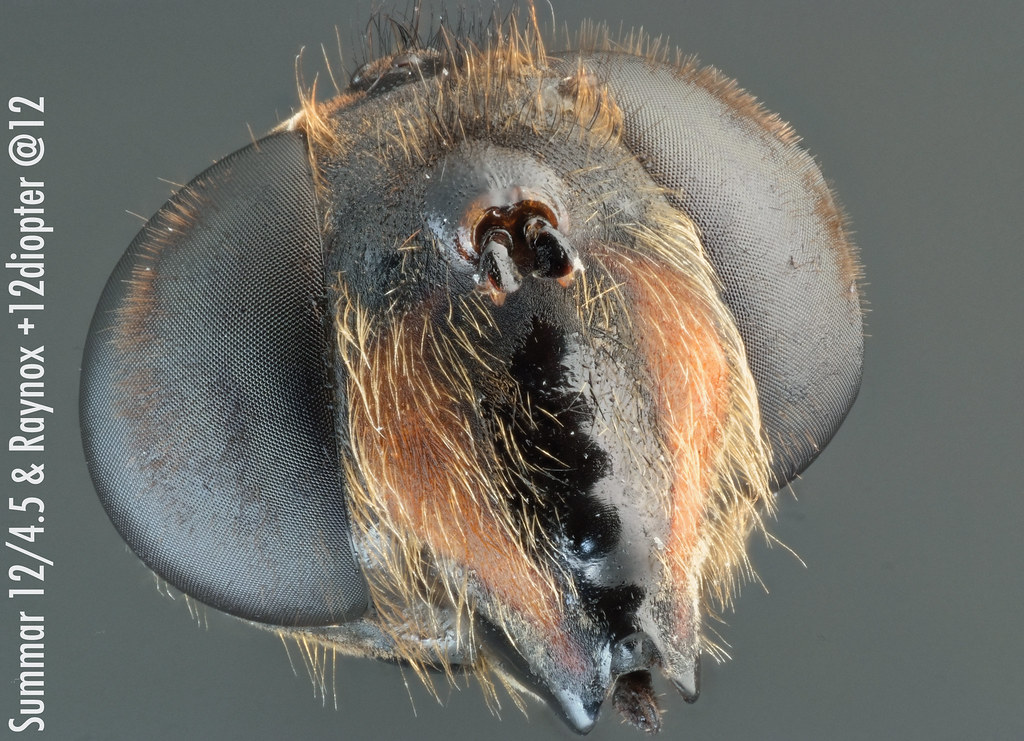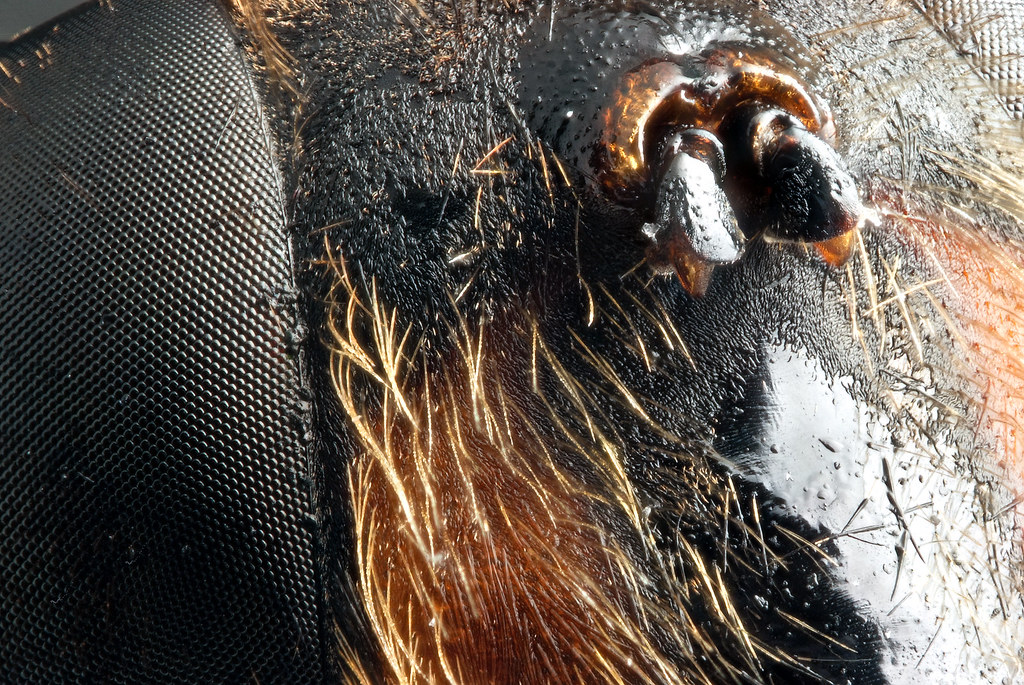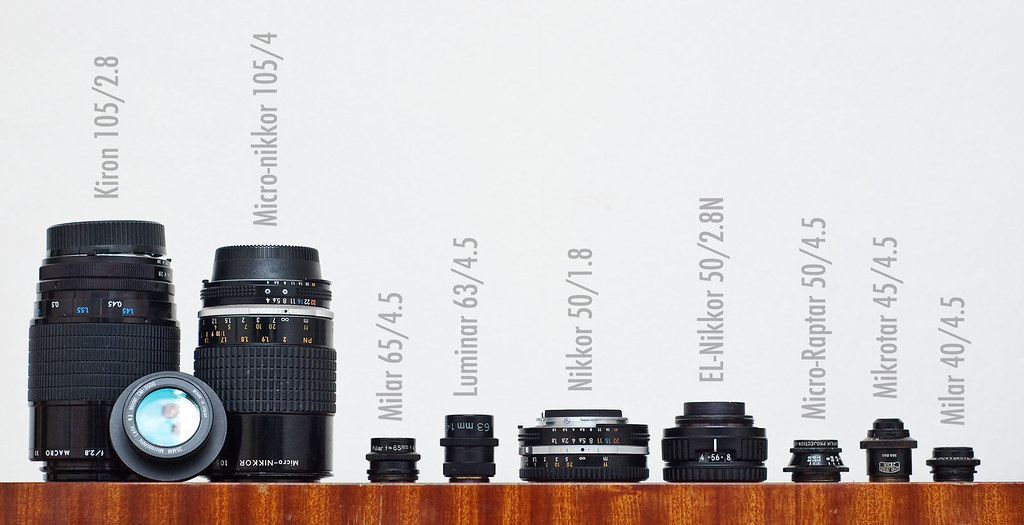
I decided to run a simple comparison between these lenses at a magnification I often like to use in the field: 2.5:1.
It's not a scientific test and I have only included one aperture setting per lens. I've tried to choose the setting so as to get the most out of every lens or lens combination. In some cases I chose it from experience (I know where many of them have their sweet spots) and in other cases I had to try a couple of different settings to decide.
The test subject is the head of a dead hover fly. I know this is not an ideal subject for a standardized lens test. However, I'm not so much interested in corner performance, flatness of field etc since I mainly work in the field on living subjects.
Each test shot is stacked from 25 exposures in Zerene Stacker. Whitebalance was fixed at 4800K. The plastic cup diffuser I used here adds some warmth and that is why I didn't go with 5300K-5600K which is the standard flash light temperature. I have cropped the images from the sides to reduce the dead space around the subject but otherwise the images are as shot.
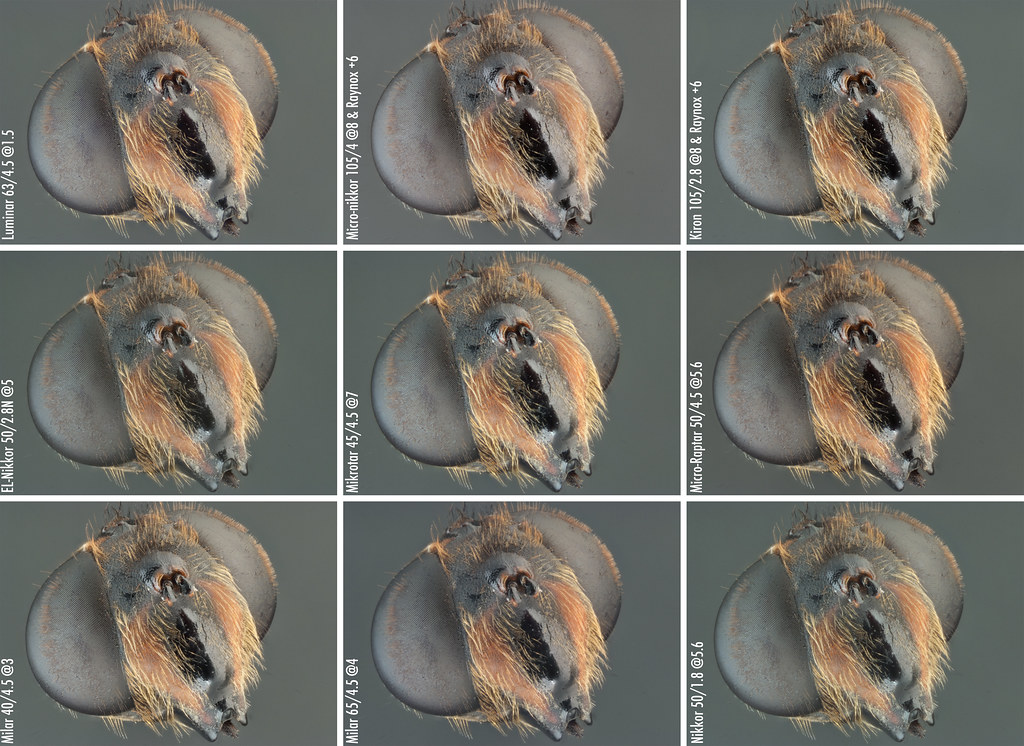
3100px version
6600px version (12Mb)
Individual test-images (Click links for high-res versions!)
Kiron 105mm f2.8 & Raynox +6 diopter (effective focal length: 65mm)
Nikon Micro-nikkor 105mm f4 & Raynox +6 diopter (effective focal length: 65mm)
Ernst Leitz Milar 65mm f4.5
Carl Zeiss Luminar 63mm f4.5
Nikon Nikkor 50mm f1.8 (used reversed)
Nikon EL-Nikkor 50mm f2.8 N (used reversed)
Wollensak Micro-Raptar 50mm f4.5
Carl Zeiss Jena Mikrotar 45mm f4.5
Ernst Leitz Milar 40mm f4.5
I won't comment much on the performance since I haven't had time to carefully examine and compare these images.
Overall I think they are all quite good and the differences aren't huge. The top quarter/third of the Wollensak Micro-raptar image indicates that there might be a problem with how it is mounted on the bellows - perhaps it wasn't centered properly. I'll look into it.
Setup
If I wanted to test the optical performance of these lenses under ideal conditions there would have been better ways to do it. This is not what I set out to do here though! Instead, I wanted this test to reflect field conditions to at least some degree. Doing the test in the field was pretty much out of the question - it's freezing cold here and everything would have been covered in snow and ice.
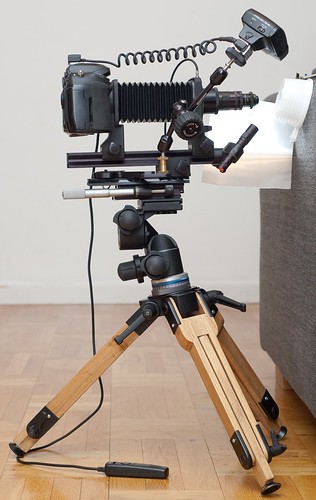

Camera body:
Fujifilm S5pro
Focusing, and positioning:
Nikon PB-6 Bellows unit
Newport Linear stage + Starrett micrometer
Manfrotto 410 geared head
Light
Nikon SB-400 flash unit
Aluminum reflector
Short coiled TTL-cord
Manfrotto 819-1 Hydrostatic arm
Custom Brackets CB Mini-RC side bracket
To aid focusing (not relevant to the exposures): 1W LED mounted on small Cullman ballhead attached at the end of the bellows rail
Additional support
Novoflex panorama base
Stabil Macro, wooden tripod
Living room couch
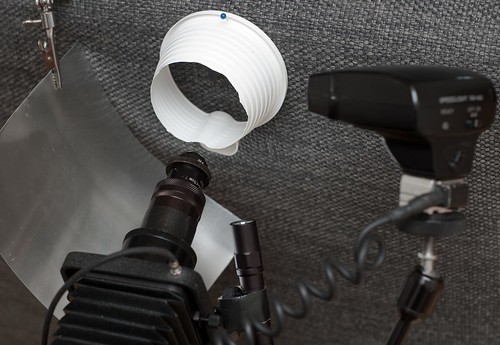
This shows how the lighting was arranged: SB-400 from top right, aluminum reflector from bottom left, plastic cup diffuser around the subject.

The hover fly head was attached to a needle at the center of the plastic cup.
This kind of lighting/diffusion is usually not possible with living subjects and my initial thoughts were to use one of the DIY macro beautydish diffusers I usally work with. However, I soon realized that when changing lenses and having to accomodate for the different working distances it would have been difficult to get the lighting consistent enough with that type of diffusion. I could have mounted the flash completely off camera but decided to use this kind of diffuser instead and it seemed to work reasonably well in terms of consistency.
/John

